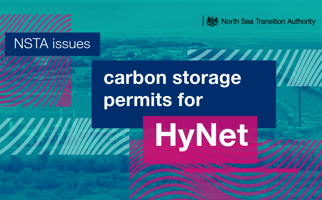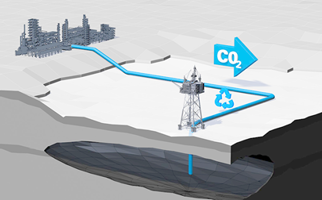
- Flaring down by 50% since 2018, after 13% drop last year
- 2022 saving equates to gas demand of 80,000 UK homes
- NSTA’s proactive approach and industry effort reaping rewards
North Sea flaring has been cut in half following four consecutive years of reductions driven by tough measures to make UK oil and gas production cleaner, new analysis shows.
Offshore flaring fell again in 2022, by 13% to 22 billion cubic feet (bcf) of gas, contributing to a total decrease of 50% since 2018, when volumes totalled 44 bcf.
Last year’s reduction alone was equivalent to the gas demand of 80,000 UK homes*, a boost for the UK’s energy security and net zero ambitions.
About a fifth of emissions from North Sea oil and gas production activities come from flaring, which is when excess gas is burned off, mainly resulting in carbon dioxide emissions.
Some flaring is unavoidable for safety and operational reasons, but the North Sea Transition Authority (NSTA) has been consistently clear that more can be done to prevent the waste of gas needed to heat and power homes and businesses.
The NSTA started benchmarking flaring performance in 2020 and the following year issued tougher guidance, stating all new developments should have no routine flaring and venting, with zero routine flaring across all North Sea platforms, whether new or existing, by 2030 at the latest.
In addition to tracking, monitoring and reporting performance, the NSTA closely scrutinises operators’ applications for flaring consents, pushes back against requests to increase flaring and has ordered operators to temporarily restrict production to stay within agreed limits. The NSTA has also used sanctions powers for consents breaches, with £215,000 worth of fines issued in late-2022.
Hedvig Ljungerud, NSTA Director of Strategy, said:
“It is hugely encouraging to see North Sea flaring cut in half in just four years, something the NSTA has made a priority, and which supports both the UK’s energy security and net zero ambition. Industry also deserves credit for making this progress.
“The NSTA expects reductions to continue and remains firmly focused on both supporting and challenging industry on emissions, including from flaring and venting.”
Backed up by its Stewardship Expectations, the NSTA regularly engages with industry to highlight best practice and has, for example, worked with operators to improve procedures to reduce flaring associated with platform restarts.
These approaches reflect the NSTA’s strategy, revised in early 2021 to oblige industry to support the UK government’s net zero 2050 target.
Industry has shown it is committed to cleaner operations, having pledged to halve overall production emissions by 2030 in the North Sea Transition Deal.
Operators have made substantial investments in equipment designed to minimise flaring, namely flare gas recovery units, each estimated to save up to 22 tonnes of flared gas per day.
Production operations coming to an end on older platforms with higher emissions has also contributed to the drop in flaring in recent years, though last year’s reduction in flaring was still against a backdrop of a 17% rise in gas production.
Meanwhile, venting, when gas is released without being burned, went up by 5% to 2.9 bcf in 2022, having been at particularly low levels in mid-2021 due to prolonged maintenance shutdowns across multiple platforms, timed to coincide with work to upgrade major pipelines. Venting represents about 0.15% of total UK greenhouse gas emissions and less than 5% of North Sea production emissions.
Notes to editors:
*A city with 80,000 homes would be similar in size to Dundee, which has 75,000 dwellings, according to Scottish Government figures.
Offshore flaring intensity – the amount of gas flared per unit of oil produced – decreased from 90 cubic feet of gas per barrel (scf/bbl) in 2021 to 84 scf/bbl in 2022, a 12-year low.
Flaring at onshore terminals totalled 2 bcf in 2022, down by 7% compared to 2021, and 44% lower than in 2018.
In 2016 the NSTA introduced a set of Stewardship Expectations, designed in consultation with industry, to provide clarity on expected good practices. In 2021, Stewardship Expectation 11 – Net Zero was issued, setting out how the oil and gas industry should reduce emissions at every stage of the project lifecycle.
For further information please contact:
Tel: 07776 548196
Email: pressoffice@nstauthority.co.uk



